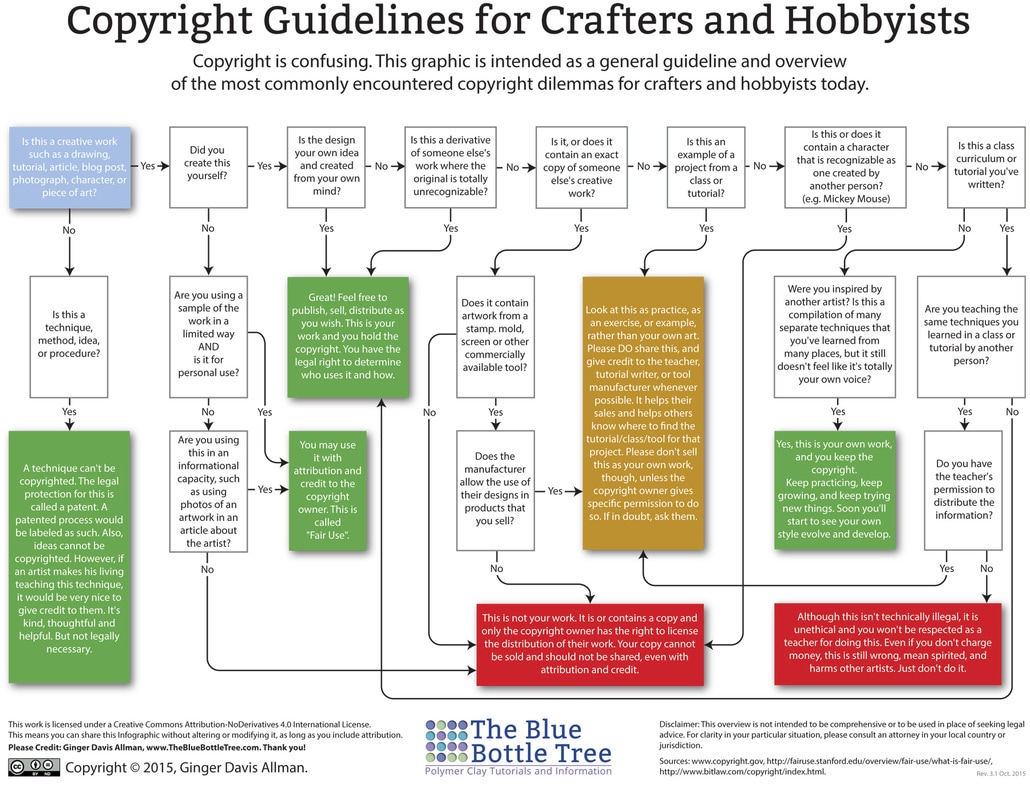|
Please Note: It's very beneficial to study and reproduce another artist's work to learn techniques, but copying their work and presenting it as your own is a copyright violation. When you follow an example from a class or tutorial, look at the piece as a learning exercise, rather than your own art. Please DO share it and give credit to the teacher wherever possible, ie: "Your Name, After Sandy Sandy, - date". Online, a link to the artist where more information can be found should be included. Your name and "After Sandy Sandy" should also be written on the back of the physical copy. This helps the teacher's sales and directs others to the tutorial or resource. It is not morally or legally correct to physically show or sell this as your own work, unless the copyright owner gives you specific permission to do so. If the copyright holder gives permission, there may be specific requirements set forth. I was excited to view the alcohol ink paintings at a local art show, but was disappointed to find that the painting that had won an award was not entirely original. I studied that same video years ago myself and have seen that recognizable scene reproduced countless times online. I have also seen others teaching the very same techniques and composition based on that image! Needless to say, corresponding with the original artist, she was not happy about it either. Looking further, there were also a couple of copies done from my own online step by step tutorials. And in another show, I saw a painting done from my exact design and step by step lesson in one of my live classes. I was saddened, because I thought my students knew better. Below, I have tried to educate people on the difference between the right and wrong way to go about copying and learning. A technique or an idea can't be copyrighted, however if an artist makes her living teaching the technique, it would be very nice to give credit to them. This is kind and thoughtful, but not legally required. Study the technique and follow along with the project. Just don't enter a live class assignment or online tutorial painting in an art show, reteach someone's same lesson, (especially using their materials), sell it without the teacher's permission or claim it as your own. Once the technique has been practiced and grasped, your own idiosyncrasies will emerge. If the work is a derivative of someone else's creative work, yet has changed or evolved over time and is totallly unrecognizable, you then hold the copyright and have the legal right to determine who uses it and how. Bottom line - Follow along with tutorials as practice. Learn the techniques and perfect them, but give credit where it is due. Practice, practice, then practice some more. Throw in your own unique twists. Share your new ideas and discoveries. Make the art your own. Using, sharing or teaching the same TECHNIQUE learned in a class or tutorial by another person is okay, as long as you change the subject matter, vary the approach and use your own design, examples or projects. Simply reproducing, re-painting or re-teaching someone else's work is not acceptable. ABOUT USING PHOTOGRAPHS ... If you are using someone else's photo for reference, make sure it is specified that it is "copyright free, in the public domain with complete use granted". Even if it is on a site like Pixabay, it is kind and good spirituality to give credit and link back to the exact place you got the image. If you copy that image, with very little change in design, focus, composition, colors, feel, etc., or without using multiple reference materials; thus producing a near identical photographic rendering, you cannot claim copyright. If an image is purchased, the copyright cannot transfer to anyone but the original purchaser. When reposting online, only share photos with clear identification on the image and/or a link to the photographer's page, website or portfolio where the image was originally found. When you copy and do a painting or drawing from one reference photo only, or even just get your main inspiration from a really awesome fine art photo, you are literally dipping your brush into someone else's soul. You are seeing life through their eyes and perspective, tapping into their skill and unique point of view. So be grateful for their gift and honor it as you would want someone else to honor your own. This is why I prefer to use (at least) several reference photos, along with sketches, my previous paintings and imagination for any one piece. With time, practice and patience, anyone can do the same. My Personal Policy: I certainly don't mind if pieces done in class are gifted. I actually prefer that to selling, of course. But I also know people like to buy from their friends and after a while, things start to pile up. And it might be nice to get some money back, for more classes and art supplies. So we need to set some guidelines. All pieces done in my live or online classes from my step by step tutorials, must be signed with Your Name, then "After Sandy Sandy" and explained that it was done from my work, in a class. If posting online, linking to me is required and using the hashtag #LearnLoveCreate is appreciated. These works, because they are actually still my designs, cannot be entered in art shows. Contact me for permission to sell. If consent is given, the work cannot be sold for less than mine. Current prices will be quoted upon request. Recap: It's good to study another artist's work to learn techniques, but copying their work and presenting it as your own is a copyright violation. See links to more of my free videos here.
Zoom In and Check Out This Handy Info. Graphic
0 Comments
Leave a Reply. |

